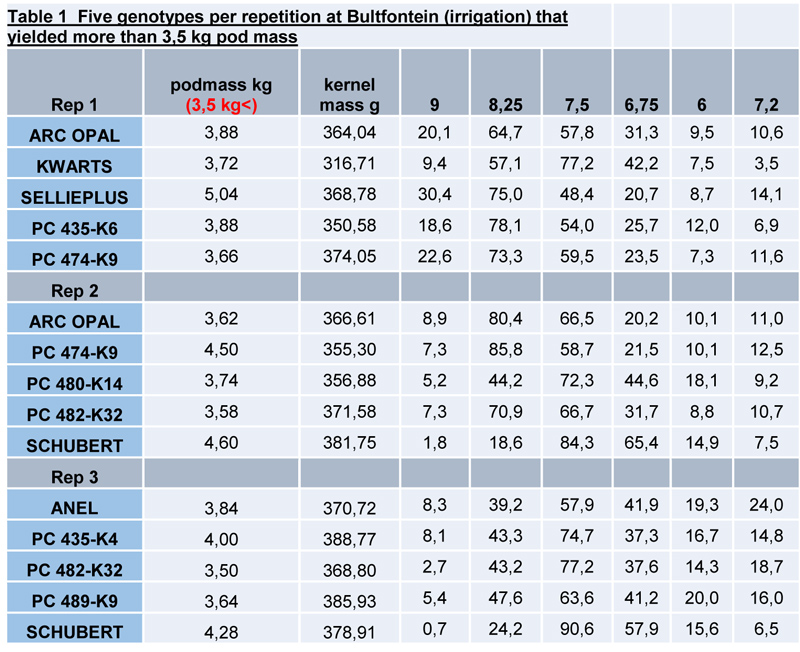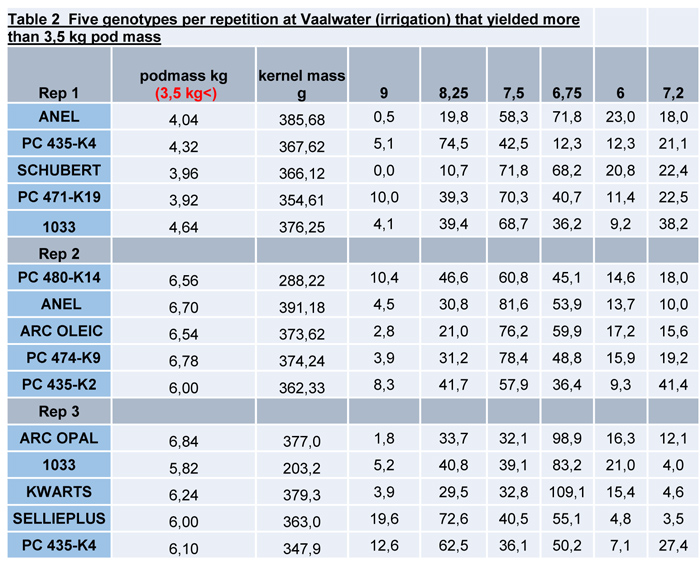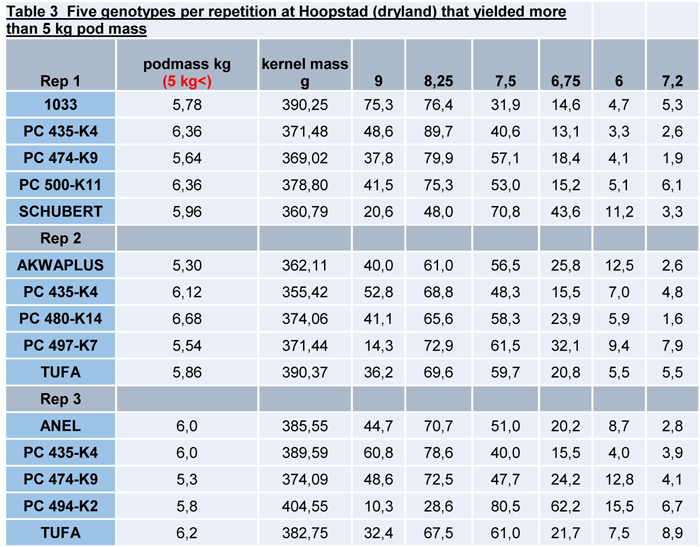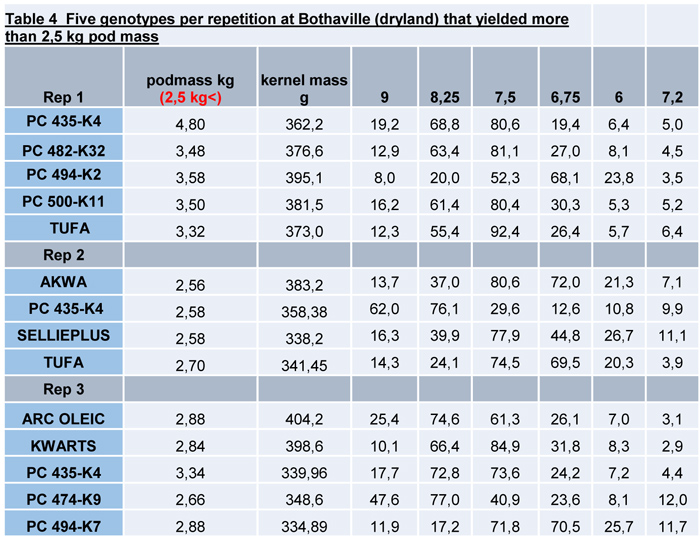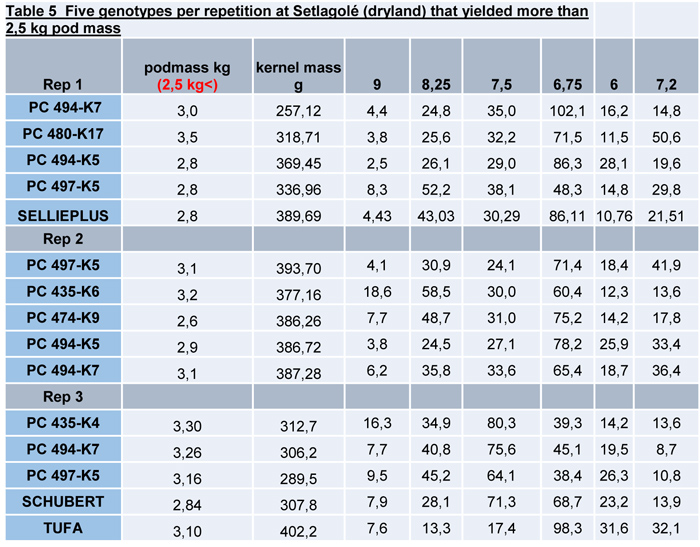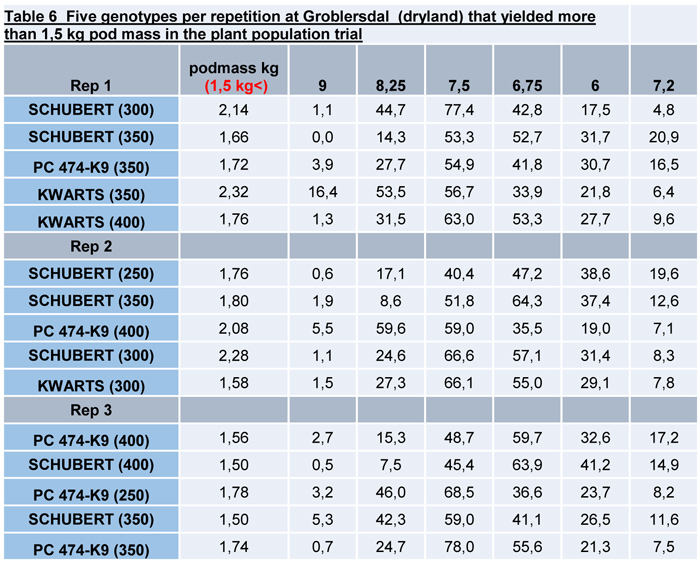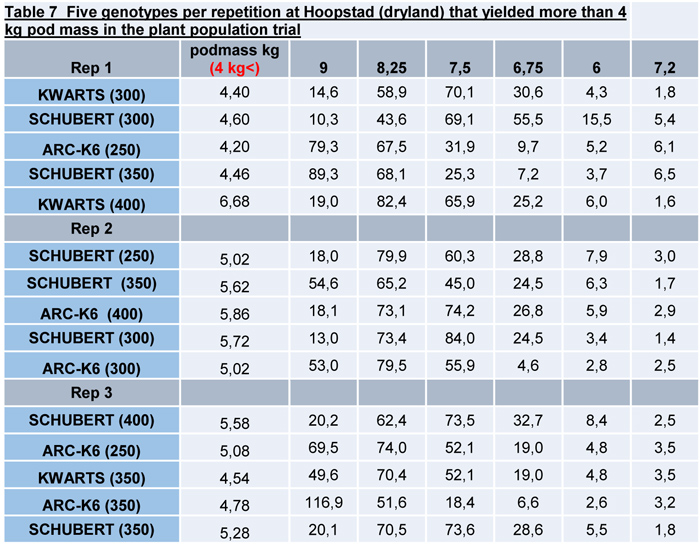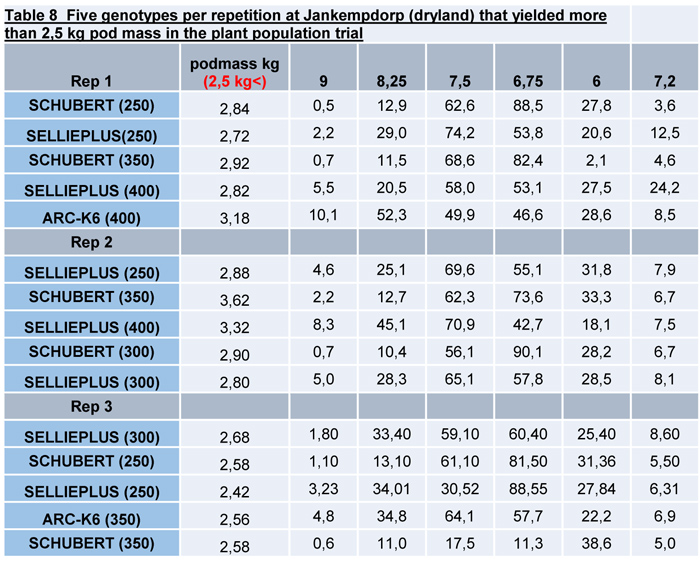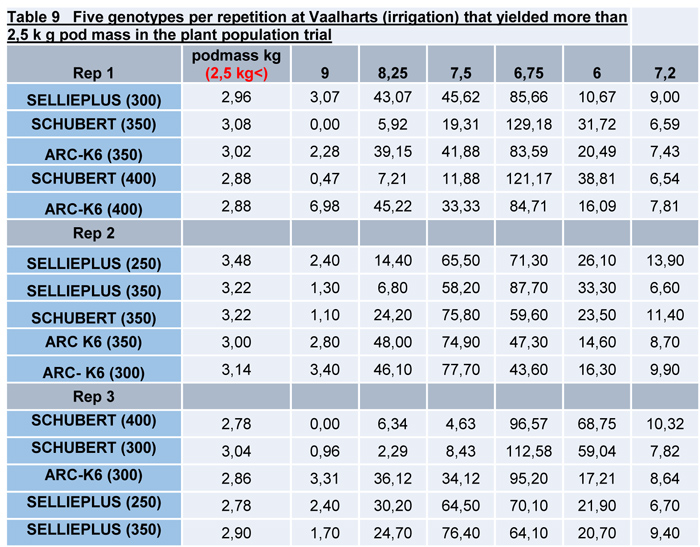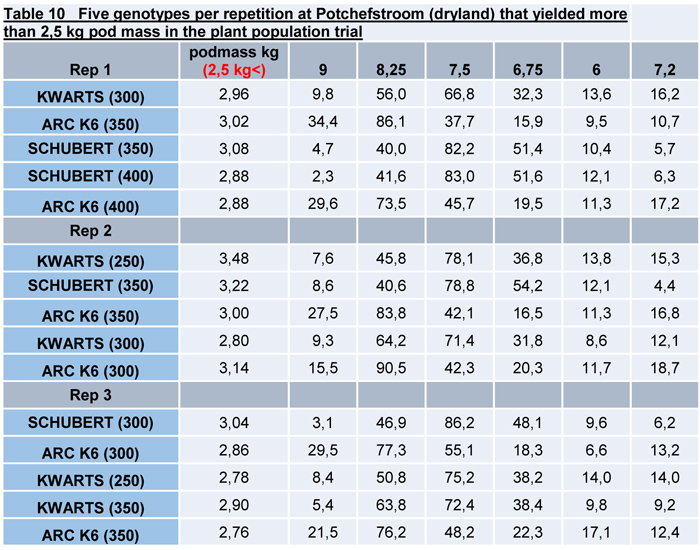It is the time of year again to share the national groundnut cultivar trial results of the Agricultural Research Council (ARC). Registered and breeding line varieties were again under investigation. New accessions that were developed by the ARC’s breeding division were introduced to the 2022/2023 trials.
The ARC is constantly busy developing new cultivars to meet the industry’s requirements. Thus two new cultivars were registered with the Registrar of Plant Improvement in terms of section 20 of the Plant Improvement Act, 1976 (Act No. 53 of 1976) and the listing of the following varieties – ARC 474 (PC 474-K9) and ARC K6 (PC 435-K6) – in the national varietal list were approved. Seed of these two cultivars are currently being multiplied.
During the 2022/2023 season cultivar and plant population trials were planted under dryland and irrigation conditions and 24 genotypes (cultivars and breeding lines) were investigated – 22 from the ARC and two from SA Peanut. The aim of the trials is to determine the best breeder seed so that the multiplication of the best cultivars can commence. To accommodate uniformity, all trials were harvested 150 days after planting.
Data were analysed by using the Genstat statistical programme and all trials were planted according to a randomised block design. The 24 genotypes were planted in three repetitions and four rows of 4 m per genotype. Nine different localities with different climatic conditions were included, covering all South African groundnut production areas. The localities were Bultfontein, Hartswater (Vaalharts), Vaalwater, Hoopstad, Bothaville, Setlagole, Groblersdal, Potchefstroom and Jan Kempdorp.
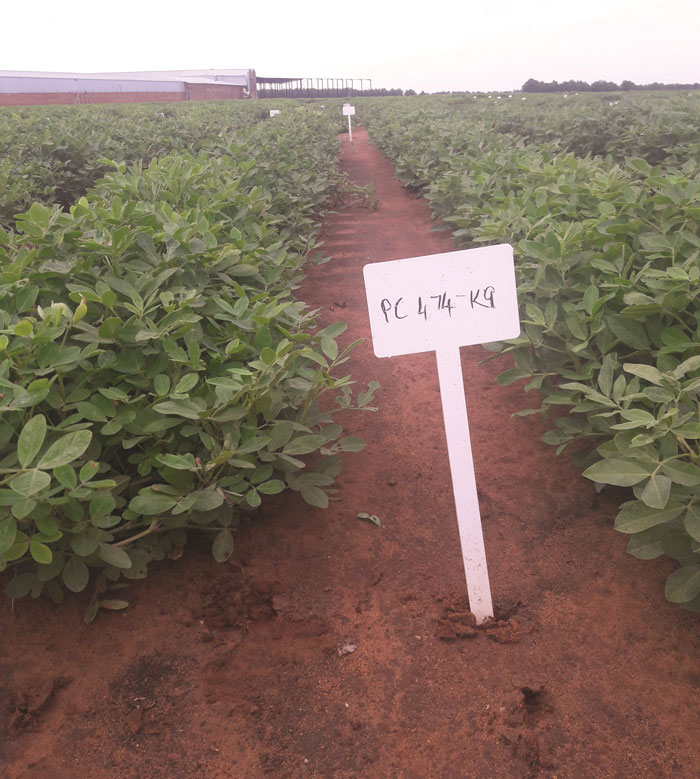
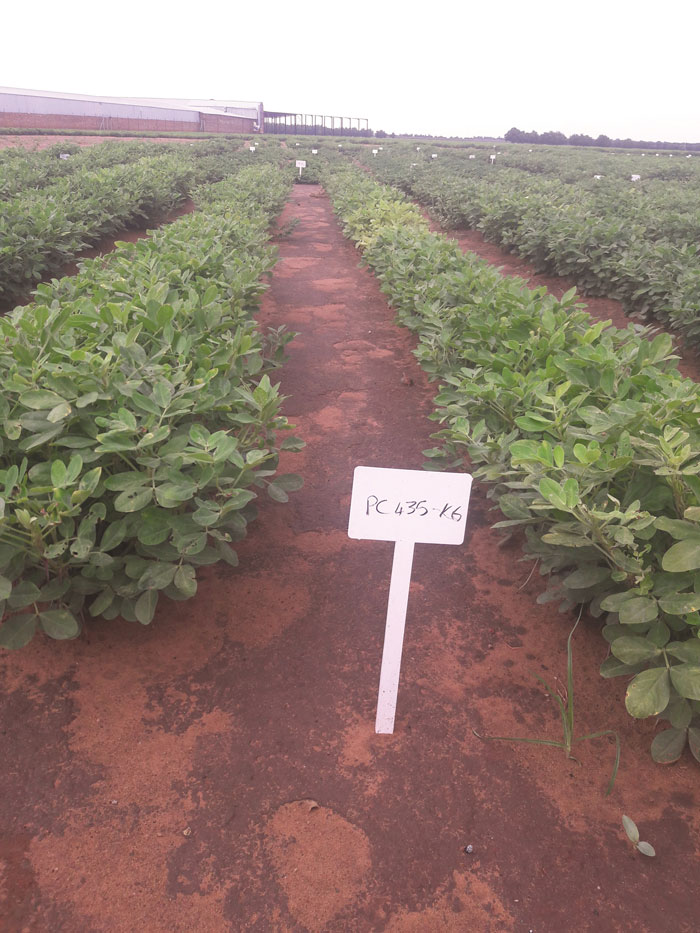
Trial results
Only results of the top five varieties that produced a pod mass higher than the benchmark are presented in this article. Results are also available in table format below. The pod mass was determined by measuring the mass of pods (producer’s stock) as was harvested from two of the four rows per genotype per repetition. The full set of results can be obtained from the author (snijmanw@arc.agric.za). The kernel mass was determined by shelling 500 g of pods per genotype. The values indicted by 9, 8,25, 7,5, 6,75, 6 and 7,2 are the screen (sieve) sizes that are used when grading of groundnuts takes place. Values 9 to 6,75 represent the choice grade fraction of the seed, and 6 and 7,2 represent the diverse/sundries and splits fraction respectively.
Bultfontein (irrigated trial that yielded more than 3,5 kg pod mass)
In repetition 1 Sellieplus did the best with 5,04 kg from 2 m x 4 m rows as harvested and collected from the field, although the kernel mass obtained from a 500 g pod sample was lower (368,78 g) compared to ARC 474-K9 (3,66 kg pod yield) with a kernel mass of 374,05 g from a 500 g pod sample. The ideal choice grade fraction from the kernel mass on sieves 9 and 8,25 was almost not obtained throughout the repetitions, but from sieves 7,5 and 6,75 – which is less preferable. This phenomenon was also prevalent across most of the genotypes.
Vaalwater (irrigated trial that yielded more than 3,5 kg pod mass)
The climatic conditions played along very well as can be seen in the high yields. The best pod yield was obtained from ARC Opal (6,84 kg) from 2 m x 4 m rows as was harvested and collected from the field. PC 474-K9 is one of the new cultivars registered. The best kernel yield obtained from a 500 g pod sample was produced by Anel (391,18 g). The bigger percentage of the choice grade fraction was again obtained from the 7,5 and 6,75 sieves.
Hoopstad (dryland trial that yielded more than 5 kg pod mass)
The yields were very good and compared well to the yields at Vaalwater which was an irrigated trial. The best pod yield was produced by PC 480-K14 (6,68 kg) in repetition 2. The best kernel yield was obtained from PC 494-K2 (404,55 g), but the better choice grade fraction was not obtained from sieves 9 and 8,25.
Setlagole (dryland trial that yielded more than 2,5 kg pod mass)
At the dryland trial at Setlagole the yields followed the same pattern as was indicated by the values in the trials mentioned above.
Bothaville (dryland trial that yielded more than 2,5 kg pod mass)
In repetition 2 there were only four genotypes whose yield was higher than the benchmark of 2,5 kg pods. In relation to the same set of genotypes/accessions that were cultivated at all localities, another genotype (PC 435-K4, 4,8 kg), different from Hoopstad, outperformed the rest regarding the pod mass. ARC Oleic (404,2 g) yielded the highest number of kernels. The best choice grade was obtained from Akwa in repetition 2, although the biggest fraction came from the smaller kernels on sieves 7,5 and 6,75. Only PC 435-K4 (repetition 2), ARC Oleic (repetition 3) and PC 474-K9 (repetition 3) produced choice grade groundnuts from the bigger kernel fractions (sieves 9 and 8,25).
Groblersdal (dryland/plant population trial)
Although the pod mass of the highest population should supposedly be the highest, the data showed that the population and the pod mass are not necessarily the determining factors. The most important variable is the choice grade fraction, because that determines the income the producer will receive. In repetition 1, Kwarts (with a population of 350 000 plants/ha) produced 2,32 kg pods from 2 m x 4 m rows. However, Schubert (with a population of 300 000 plants/ha) yielded the highest amount of choice grade kernels (166 g) from a 500 g pod sample. In repetition 2, Schubert (with a population count of 300 000 plants/ha) yielded 2,28 kg of pods, but the choice grade of PC 474-K9 (2,08 kg pods) produced the most choice grade kernels (159,6 g) per 500 g pod sample. This phenomenon is visible throughout the trials. At this stage the only explanation is that groundnuts are triploid and have a complex genetic profile which causes the variety in growth patterns and yields.
Hoopstad (dryland/plant population trial)
The Hoopstad trial was the best across the genotypes and localities. In repetition 1, the cultivars ARC-K6 (250 000 plants/ha) and Schubert (350 000 plants/ha) showed the ideal production pattern where the yield on sieves (screens) 9 and 8,25 were higher compared to the yields on sieves 7,5 and 6,75. This pattern is the ideal because the 6/7 and 7/8 kernel sizes mostly determine the quality of the choice grade fraction and have a direct effect on the price of the groundnuts. Across repetitions 1 to 3 it is again visible that the higher pod yields do not determine the choice grade yields.
Jan Kempdorp (dryland/plant population trial)
At Jan Kempdorp the yields were much lower compared to Hoopstad. The different climatic conditions are the reason for the differences across locations, which is different from the variances caused by the genotypes’ genetic profiles. It is also shown that the lower quality of choice grade kernels is produced by sieves 7,5 and 6,75. For example, in repetition 3 the kernel yield of Sellieplus (300 000 plants/ha) on sieves 7,5 and 6,75 was 119,5 g and on sieves 9 and 8,25 it was 92,5 g.
Vaalharts (irrigated/plant population trial) and Potchefstroom (dryland/plant population trial)
In these trials, the values were very close to each other. The erratic rainfall patterns affected the yields in regard to distinguishing between dryland and irrigated trials. However, the same pattern was followed as was seen in the results from the trials described above.
Due to the variations, it is viable to compare results per location amongst the repetitions and genotypes and not across localities. Cultivars on the national seed list still produced well. ARC K6 and ARC 474 are the two new registered cultivars and they performed well. The diverse/sundries and crush component (sieves 6 and 7,2) are high and could be reduced through more careful picking and shelling during the harvesting process.
